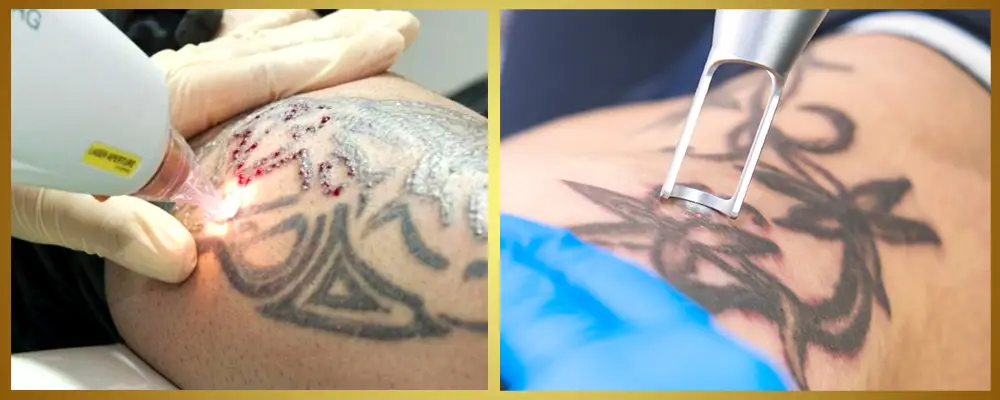Table of Contents
Laser Tattoo Removal: Types, Symptoms, and Causes
What is Laser Tattoo Removal?
Laser tattoo removal is a process that uses a high-intensity beam of light to break up tattoo ink particles in the skin. The body’s immune system removes these broken particles over time. This treatment is an effective way to remove unwanted tattoos.
Types of Tattoo Removal

1. Q-switched Nd Laser: Commonly used for darker ink colors (black, blue, green).
2. Q-switched Ruby Laser: Best for removing lighter colors like red, yellow, and purple.
3. PicoSure Laser: A newer option that uses ultra-short pulses, effective for a wider range of colors and faster removal.
Symptoms of Tattoo Removal
a. Redness and swelling in the treated area
b. Temporary darkening or lightening of the skin
c. Scabs or flakes appear as the skin heals.
d. slight discomfort Similar to sunburned skin This usually disappears within a few days.
Causes
a. Personal reasons such as regret or changing tastes
b. Career requirements or lifestyle changes
c. A bad or faded tattoo
d. Allergic reaction to tattoo ink
When to See a Doctor
1. If you have unusual pain, swelling, or infection after treatment
2. If you have a pre-existing skin condition that may affect treatment
3. It is important to consult with a dermatologist or other licensed professional to evaluate your skin type, tattoo size, and color before starting the procedure.
Diagnosis
a. Skin Evaluation: Your doctor will check your skin type and the condition of the tattoo.
b. Tattoo Assessment: The colors, ink depth, and tattoo size will help determine the best laser type and number of sessions required.
c. Medical History: Any history of skin issues, infections, or allergies will be reviewed.
Treatments
1. Laser surgery: Multiple sessions (usually 6-12) must be completed for removal. It depends on the size, color, and depth of the tattoo.
2. Topical Treatment: Ointments can be used in aftercare to prevent infection and promote healing.
3. Sun protection: Avoid sunlight on the treated area. This is because it may affect the treatment and make the problem of dark skin more severe.
4. Pain management: A numbing cream or cold compress may reduce discomfort during and after the procedure.
For the best results, always consult a certified dermatologist or medical professional before starting laser tattoo removal, and follow their aftercare instructions for safe and effective treatment.



